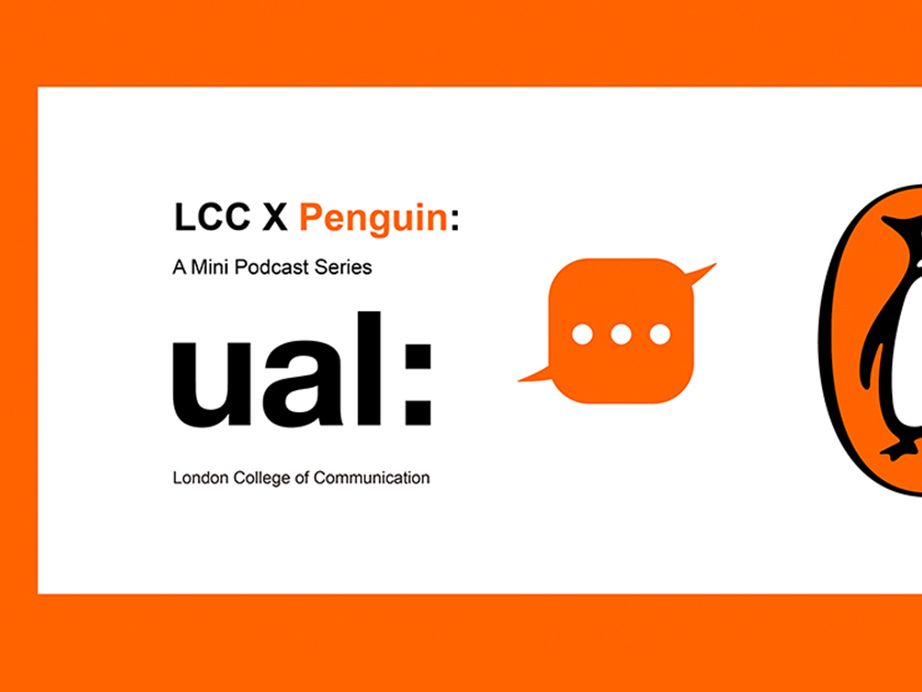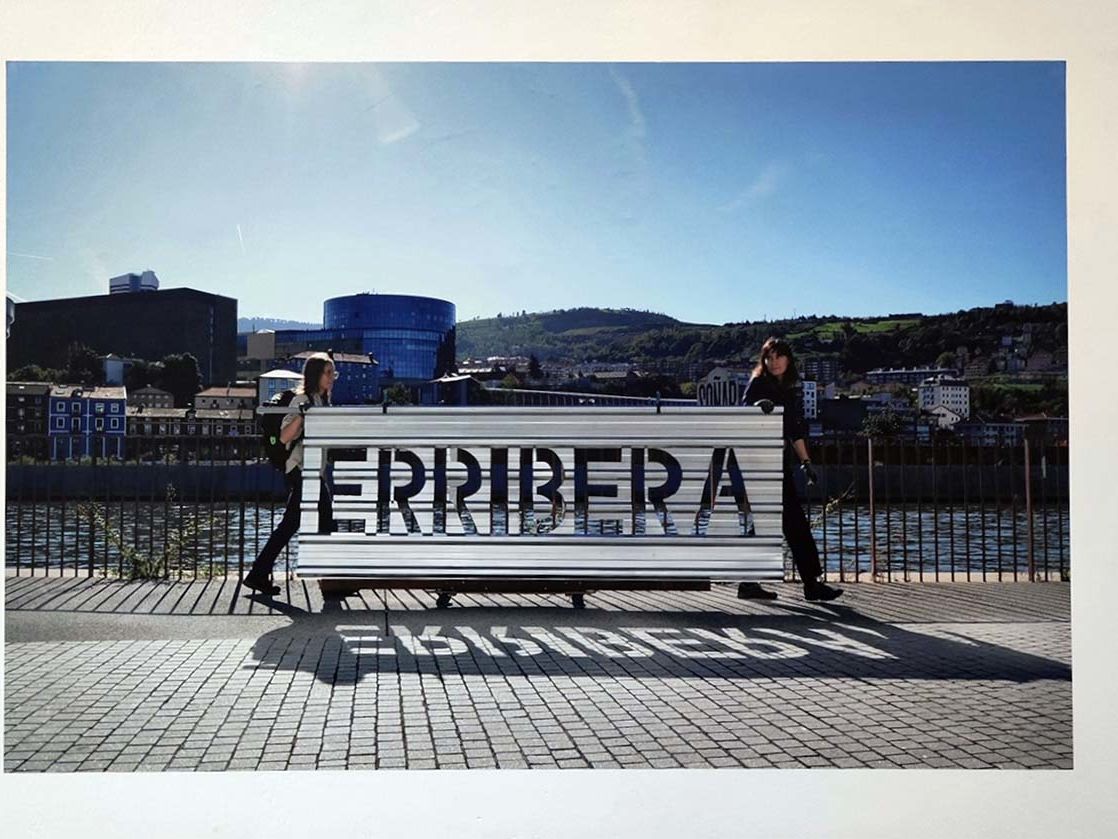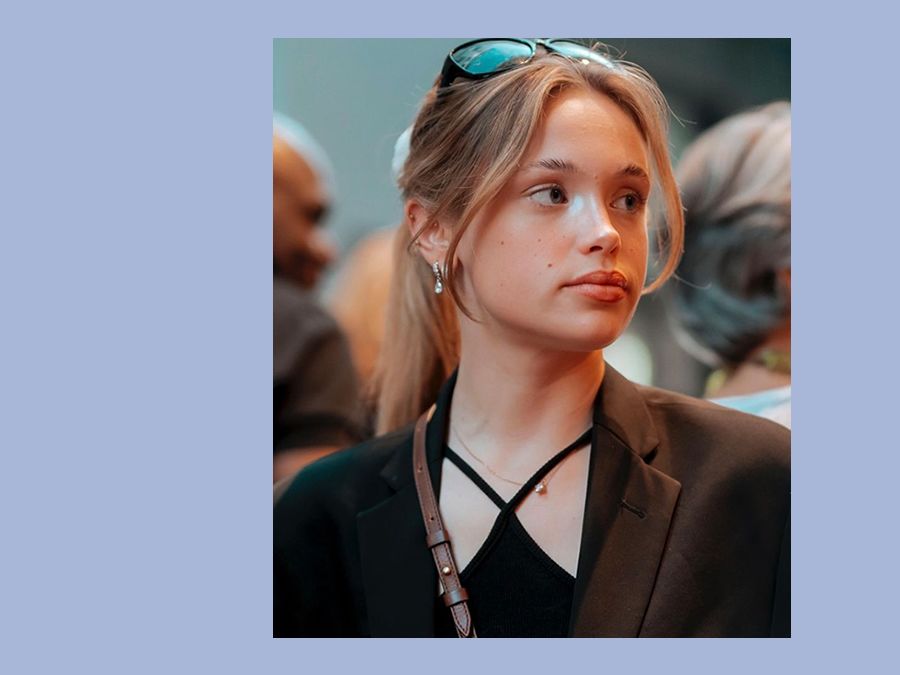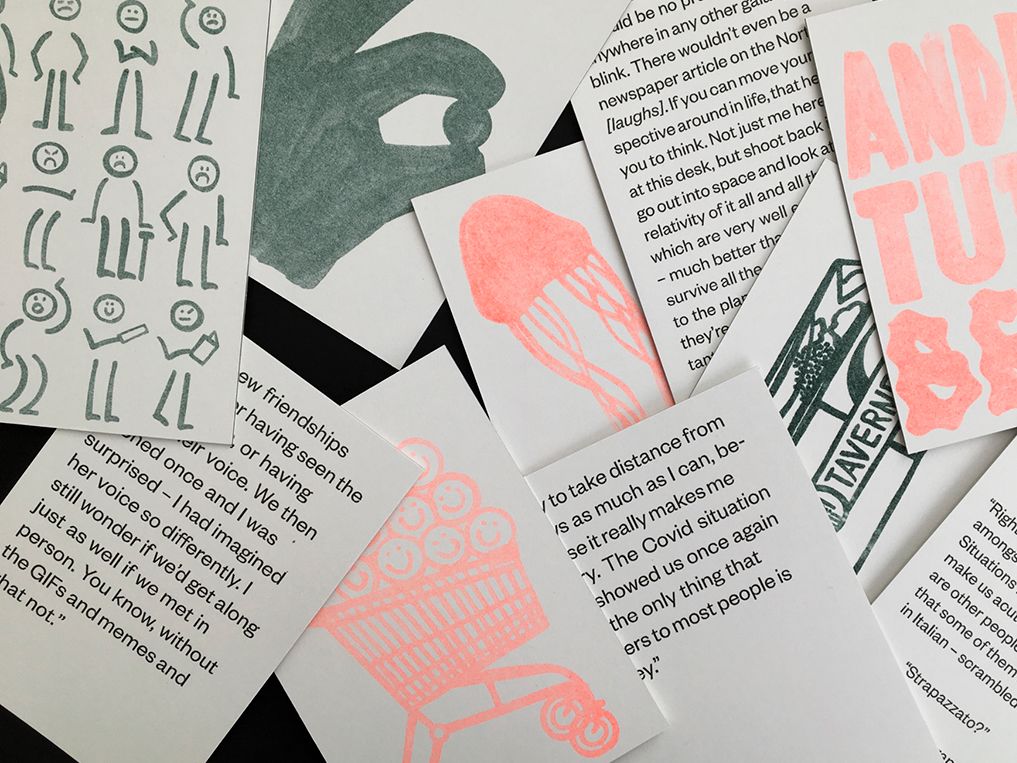
Graduate Voices: Débora Caro Reyes
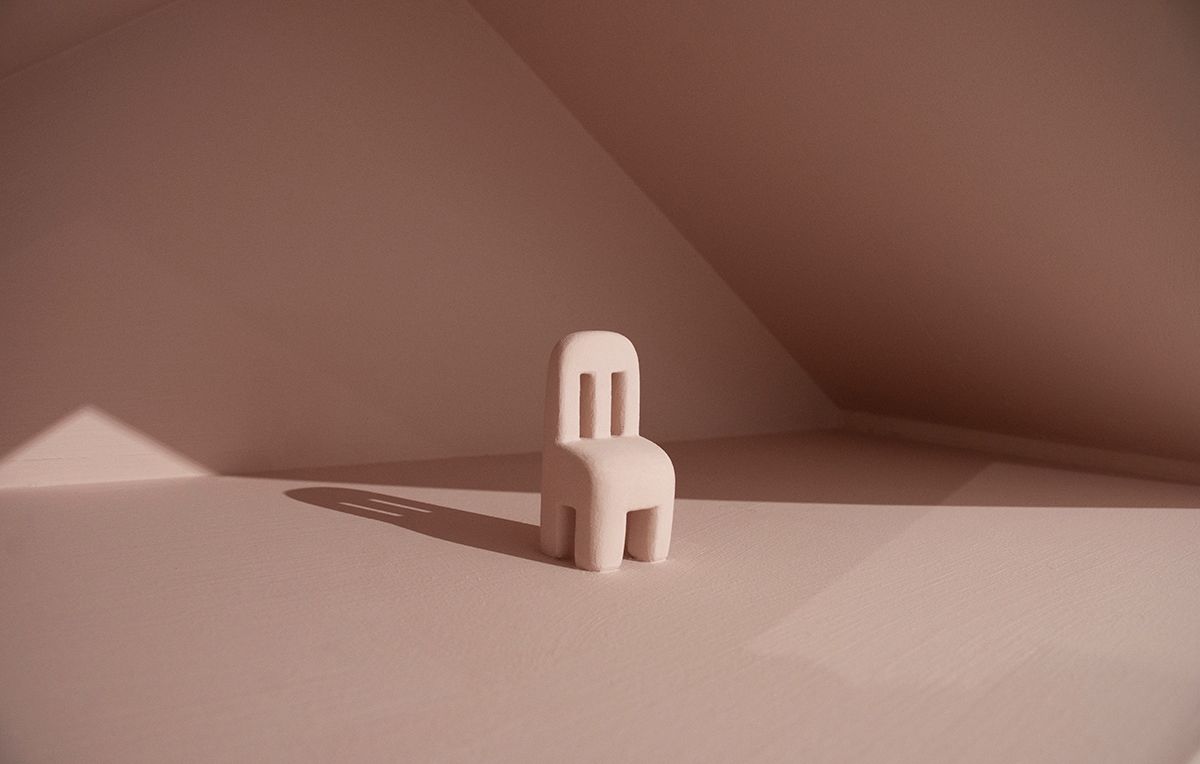
- Written byChloe Murphy
- Published date 31 August 2023

Gaining a holistic and critical understanding of the publishing landscape is crucial to carving out your own space - and your future - within it.
Combining a range of theoretical and practical approaches, MA Publishing at London College of Communication (LCC) supports students to develop the creative and critical skills they need to forge careers within the dynamic media industries.
With a focus on mastering how content is commissioned, designed and produced across print and digital media, the course offers opportunities to gain practical experience of multi-platform publishing through project-based working.
Exploring creative content development and audience engagement strategies, students also have opportunities to connect with leading industry figures through guest lectures and initiatives such as the Penguin Industry Mentoring programme.
Ultimately, MA Publishing graduates progress to roles across publishing, media and communications services, brands and creative agencies, where they work in areas ranging from editorial, rights and marketing to design and production. They might also become digital producers in established publishing houses, online content editors for global magazines, or digital marketers for new media companies.
Alternatively, some might use their transferable skills to build careers within the public or not-for-profit sectors, while others build their own micro-businesses as become entrepreneurs or launch their own freelance careers.
Débora Caro Reyes
Débora Caro Reyes is an artist and photographer based in Santiago, Chile. After graduating with honours from Pontificia Universidad Católica de Chile in 2018, she achieved an MA in Publishing at LCC in 2022.
Working across formats and mediums ranging from photography, photobooks and artist books to graphics, audiovisual sources and installations, Débora’s work uses autobiographical experiences to reflect on the psychological impact of domestic violence. Her projects aim to break the normalisation of such environments while providing the objective distance needed to see, show and connect with her audiences.
In early 2023, she produced her first solo exhibition, Lo que no fue, no será, which was held at the prestigious Gabriela Mistral Gallery, which provides a forum for cultural openness and freedom of expression across the world of contemporary art.
We chatted to Débora about developing her own hybrid practice, gaining inspiration through graduate networks, and the journey to producing her first solo exhibition as a creative practitioner.

Tell us about your creative practice.
I work with various approaches depending on the project; however, my primary mediums are installations, photobooks, and ceramics.
My artwork and photobooks delve into my autobiographical experiences, with a specific focus on exploring the perception of psychological domestic violence witnessed during childhood and its lingering effects in adulthood. Through my work, I aim to expose and challenge the normalization of such environments - both within myself and society at large.
Simultaneously, I strive to create distance to gain a clearer perspective: enabling me to connect with viewers on a deeper level.
Have you always been interested in publishing, or was this an area you moved towards over time?
My interest in publishing developed as I pursued my undergraduate studies in contemporary visual art and photography. While exploring alternative ways to present my photographs, I created a photobook for an exam during one of my courses. This experience ignited my curiosity, leading me to delve deeper into the publishing medium.
I took additional classes and eventually obtained a diploma in photography for editorial projects. As my practice evolved, I began blending concepts and imagery from my artworks with publications to create artist books.
Recognising the value of my passion for art installations and photography, I envisioned a professional career encompassing both paths: working within the publishing industry through a focus on art books, photobooks and exhibition publications while maintaining my own workshop for creating art installations.

Why did you decide to apply to MA Publishing at LCC?
When I started researching programs related to publishing, London stood out as a hub for cultural activity with its vibrant publishing scene.
University of the Arts London (UAL) was my first choice due to its combined focus on media and the arts, which perfectly aligned with my aspirations. The prestige of the university, along with its exceptional facilities, further solidified my decision to apply to MA Publishing at LCC.
The university's website provided valuable insights into the works of previous generations - inspiring me with limitless possibilities, and confirming that UAL would be an ideal place to openly pursue my combined interests.
What were the major highlights from your time on the course?
I really enjoyed the extensive use of the LCC workshops, which allowed me to apply what I was learning directly to my creative practice.
We also attended a number of alumni talks, which were very useful as they provided insights into various career paths within the publishing industry. Hearing accounts of graduates' career journeys and projects first-hand expanded my perspectives on the range of possibilities that publishing could offer me.
Furthermore, the connections I made at LCC were significant. From our course team, dedicated lecturers and expert workshop technicians to my diverse group of classmates from different backgrounds, nationalities and areas of interest, I formed deep and lasting friendships. These relationships continue to provide support and networking opportunities even after graduation.

What did you most enjoy about your time at LCC?
The flexibility of the course allowed me to further develop my creativity by tailoring it to my specific interests.
The guidance and support of my Course Leader, Frania Hall, allowed me to delve deeply into my interests and navigate the course better. Additionally, through Frania's network, I could connect with alumni who had worked on subjects related to my interests. This exposure to their experiences and current work was invaluable for gaining insights and inspiration.
The numerous workshops offered within the course also played a crucial role in my creative and professional journey. Not only did they provide access to a wide range of materials, but I also found a supportive community of individuals who fostered their own creative processes.
Each workshop I attended introduced me to new ideas, references, and techniques: for instance, Tony Yard from the Offset workshop; Rahel Zohler's Bookbinding workshop; Klara Vith, Andrew Long, and Ali Richards from the Letterpress workshop; and the team from the Screenprinting workshop.
What have you been up to since graduation?
Since completing my Master’s degree, I’ve actively sought different opportunities while working on my personal artworks, photobooks, and art book projects. I'm interested in producing more photobooks and art books while preparing applications for future opportunities and planning the next steps of my career.
I’ve participated in several photobook fairs where I've showcased my work, and I was honoured to be selected for participation in the Santiago Young Art Contest, where my artwork received first honourable mention in the 'Installation' category.
Towards the end of last year, I received the news that I was selected as 1 of 3 artists for a solo exhibition at the Gabriela Mistral Gallery, which was really exciting. This opportunity required intense work to meet the exhibition's demands, as the application required an original exhibit idea that could feature new work specifically created for the Gallery's space.
Every piece was meticulously finalised in time for the exhibition, and throughout the run, I engaged in various activities related to circulating my work: we organised a workshop, which involved a guided tour by curator Catalina Montero and an opportunity for me to speak about my practice. Participants also created their own booklet before making a collective intervention to a design on the Gallery's main window.

Tell us a little more about your exhibition with the Gabriela Mistral Gallery - how did you learn about the opportunity, and why did you decide to get involved?
In Chile, artists often rely on applying for public funds to create and circulate their artworks. One central platform that every artist is familiar with is the Fondart (National Fund for Cultural Development and the Arts). Numerous open calls are announced each year, generating significant demand and intense competition.
Through one of these open calls, I applied for the opportunity to exhibit at Gabriela Mistral. Each year, 3 exhibition projects are selected, and this year, the selection was made from 71 projects submitted across the whole country. The expert selection committee was composed of 5 contemporary artists and curators – women who are currently active in the Chilean art scene, which is fantastic.
Situated in a central location with high foot traffic, the Gallery provides an accessible and well-regarded platform for artists, and holds an important place within the Chilean art scene. It’s a renowned public gallery that showcases esteemed contemporary artists like Regina José Galindo, Voluspa Jarpa and Alejandra Prieto. I deeply admire these artists for their exceptional work, and the opportunity to have my first solo exhibition in this Gallery was an incredible honour.
To stay informed about opportunities like these, I actively follow the social media accounts of galleries and cultural institutions that align with my artistic interests. When I came across the publication about this open call, I was already developing new ideas for my artwork, which I could further develop when working on the exhibition proposal alongside the curator, Catalina.

What were your highlights of your exhibition experience?
My first solo exhibition was filled with several highlights. Firstly, being selected to exhibit at the Gallery was a significant achievement which provided me with a valuable platform to present my work to a broader audience.
Additionally, I was thrilled to incorporate an editorial project into the exhibition, which provided an opportunity to showcase both of my interests in one place: the artist's book, Cuaderno pedagógico (Pedagogical Notebook), is a Leporello-style artist book, measuring 18 x 520 cm.
One unforeseen highlight was the audience's response to my work. After working extensively with autobiographical experiences and trauma, I understood the importance of providing a connection and validation to viewers who may have experienced similar situations. However, the patriarchal sociocultural context of Chile and Latin America, where the family concept is extremely highly valued, left me anxious about how my work would be received. Fortunately, from the very beginning, I received positive feedback.
During the opening, I had a very emotional encounter with someone who shared their experiences and felt a deep connection with my work. We both hailed from the same city in Chile, and many aspects were relatable to them, which profoundly moved me. To capture the responses and comments of visitors, I commissioned a visit book, and seeing how deeply people connected with my artworks was a beautiful experience.
Another highlight was collaborating with an exceptional team that made the exhibition successful:
- Curator Catalina Montero provided unwavering support from start to finish.
- Claudio Muñoz contributed his expertise in mounting systems and constructing wooden objects for the artwork, La ropa sucia se lava en casa (Dirty laundry is washed at home).
- Estudio Petricor transformed one of the rooms into two by building a wall and sealing it, creating a stunning space.
- Matias Serrano handled the programming for the video installation, which involved switching videos seamlessly.
And last but not least, I was able to work with my father in the series Self Portrait I, II, III, IV, V, and VI, which was also important in different aspects of my work.

How did MA Publishing prepare you for the next step in your career?
My degree equipped me with a comprehensive skillset and knowledge base that directly translates to my work as a visual artist and photographer.
The emphasis of the course on the entire publishing process - from collaboration and marketing to industry trends - has empowered me to create, promote, and distribute my art books and installations more effectively. Through coursework and hands-on projects, I was able to gain valuable insights into editorial, design, and production aspects, which have proven invaluable in creating my own art books. Now, I can actively be involved in every stage: from conceptualising content to designing layouts and overseeing printing.
Furthermore, MA Publishing broadened my horizons and allowed me to explore various areas within the publishing industry. While my initial focus was on artist books and photobooks, the course exposed me to exhibition publications and catalogues, which became the central theme of my dissertation. And alumni talks gave me diverse perspectives and insights into different career paths within publishing, inspiring me to think beyond my initial expectations.

What are your future plans?
Moving forward, I’m actively pursuing opportunities to circulate the exhibition showcased at Gabriela Mistral, both nationally and internationally. Presenting my work in different venues and engaging with diverse audiences is probably my most crucial goal for the future.
Furthermore, recognising the importance of networking and collaboration in the art and publishing industries, I’ll continue actively seeking opportunities to collaborate with other artists, curators, and professionals within the circuit, as these connections often lead to new and exciting ventures. By building a solid network of like-minded individuals, I hope to foster creative collaborations, expand my reach, and explore innovative projects.
Regarding my professional trajectory, I’m eager to work in publishing within the realm of visual arts. More specifically, I’m interested in projects involving exhibition catalogues, exhibition books, artist books, and photobooks. These mediums provide unique opportunities to merge my passion for visual art, photography, and publishing. By working on such projects, I hope to contribute to the dissemination and documentation of artistic practices, exhibitions, and cultural events, while also exploring the creative possibilities of publishing in the visual arts sphere.
Parallel to my work in publishing, I remain committed to my art practice and the continued development of my artistic voice. I aim to create thought-provoking installations, artworks, and photobooks that challenge perceptions, provoke critical thinking, and foster meaningful dialogues. Exhibiting my work in individual and collective exhibitions is integral to my artistic practice, allowing me to connect with audiences, fellow artists, and curators.

What advice would you give to prospective students who are interested in exploring the world of publishing?
My main advice would be to explore beyond your initial area of interest. Keep an open mind and be receptive to discovering new facets of the publishing industry. There are numerous areas to explore, and it's essential to remain curious and open to possibilities.
For example, I initially focused on artist books and photobooks during my studies. However, I discovered my interest in exhibition publications and catalogues through research, course assessments, alumni talks, and workshops. This expanded my horizons and provided me with unexpected opportunities.
So: embrace curiosity, engage with diverse perspectives, and be open to new areas of exploration within the publishing world.
Related links:
- Explore more of Débora's work on her website.
- Find out more about her recent exhibition, Lo que no fue, no será.
- Learn more about our MA Publishing course.
